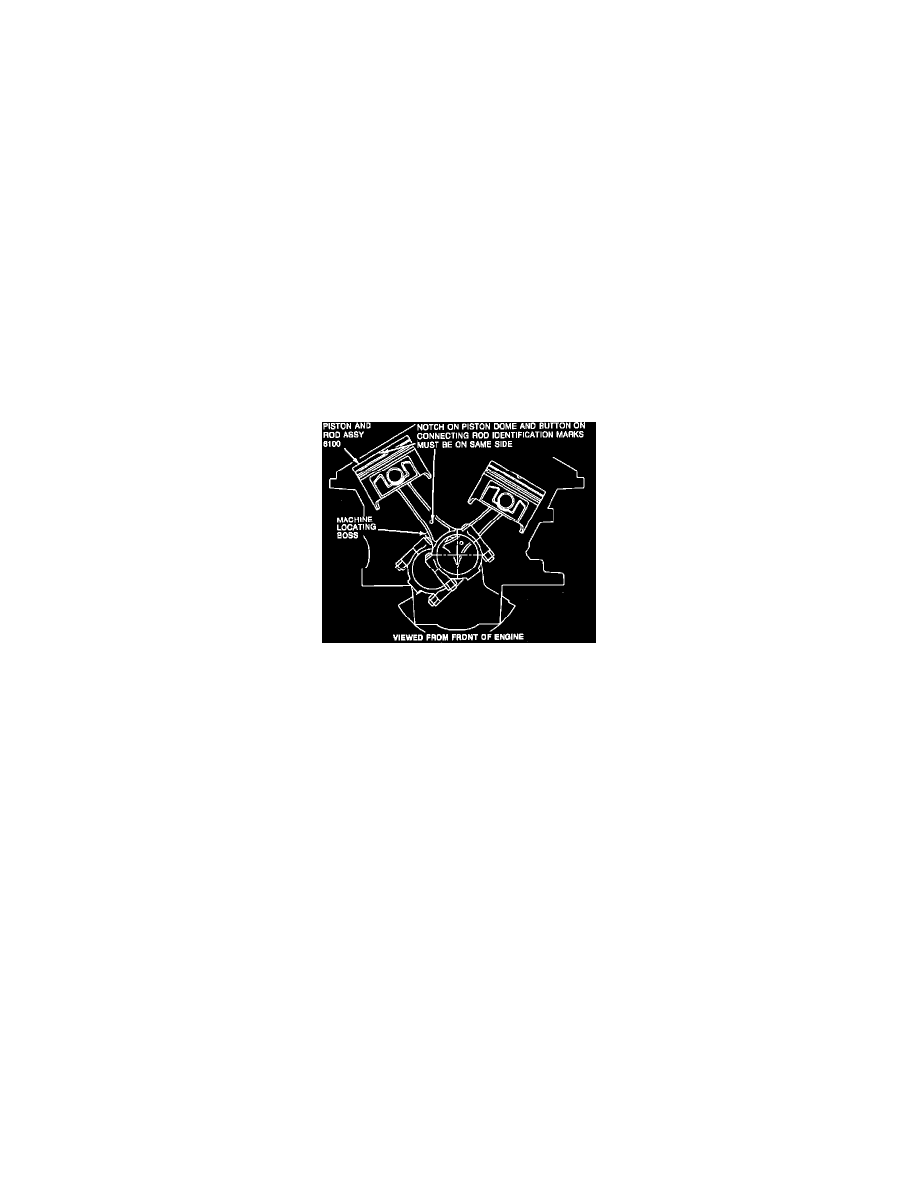Taurus V6-3.0L VIN 2 Flex Fuel (1997)

c. Remove ridge using Rotunda Cylinder Ridge Reamer 014-00292 or equivalent.
NOTE: The cylinder number is stamped on the top of the piston. Matched letters are stamped on the sides of corresponding connecting rod and
cap.
6. Turn crankshaft until the piston to be removed is at the lowest point of its travel. If more than one piston is being removed, identify the pistons and
connecting rod caps. Each component MUST be installed in its original position during assembly.
7. Remove connecting rod cap retaining nuts and cap.
CAUTION: Use care to prevent damage to bearing surfaces or possible engine damage may occur.
8. Install a 50 mm (2 inch) piece of 3/8-inch fuel hose (or similar protector) over connecting rod cap studs and push piston out through top of the
cylinder bore.
9. Install connecting rod cap and hold in position with cap retaining nuts.
10. If piston is to be disassembled, refer to Disassembly & Reassembly. See: Disassembly and Assembly
11. Inspect cylinder bore. If new piston rings are to be installed on the piston, a visible cross-hatch pattern should be obvious on cylinder bore wall, if
not, honing is required.
12. If honing is required, remove glaze from cylinder wall using spring-loaded hone. Follow manufacturer's instructions when using this type of
equipment. After honing, thoroughly clean cylinder bore using a detergent and water solution. See: Service and Repair
INSTALLATION
Piston & Rod Assembly
NOTE: Lightly oil all retaining bolt and stud bolt threads before installation except those specifying special sealant.
1. Lubricate cylinder wall and piston with Engine Assembly Lubricant D9AZ-19579-D or equivalent meeting Ford specification ESR-M99C80-A.
CAUTION: Make sure piston ring end gaps are NOT aligned before installing.
2. Install a 50 mm (2 inch) piece of 3/8 inch fuel hose (or similar protector) on the connecting rod studs.
CAUTION: As piston is tapped into bore with a wooden hammer handle, guide connecting rod onto crankshaft journal to avoid damage to
bearing surfaces.
NOTE:
Connecting rod and cap are not identified to cylinder position. The connecting rod and caps are identified with matching correlation letters.
Letters on the connecting rod and cap must be on the same side when installed in the cylinder bore. If a connecting rod is transposed from one
cylinder block or cylinder to another, new connecting rod bearings should be fitted.
Install the pistons in the same cylinders from which they were removed or to which they were fitted. Make sure notch in piston dome faces the
front of engine and machine locating boss is facing RH side of engine.
3. Install piston using Rotunda Piston Ring Compressor 014-00290 or equivalent.
4. Lubricate bearing surfaces with Engine Assembly Lubricant D9AZ-19579-D or equivalent meeting Ford specification ESR-M99C80-A.
5. Make sure connecting rod is seated on crankshaft journal and install connecting rod cap. Tighten the cap retaining nuts to 31-39 Nm (23-28 ft.
lbs.).
6. Check connecting rod bearing clearance, if necessary. See: Connecting Rod Bearing/Testing and Inspection/Component Tests and General
Diagnostics
7. Install oil pump and oil pump intermediate shaft. Tighten retaining bolts to 40-55 Nm (30-40 ft. lbs.).
8. Install oil pan.
